Or You Can Check Beef Rare Medium Thermometer
Medium rare steak temp is 130–135°F, Medium steak temp is 135–145°F
If you love your steak juicy and tender, then you probably love medium-rare steak. Cooked to 130–135°F (54–57°C), a medium-rare steak's muscle fibers are just starting to contract, but aren't yet expelling all of their juices, and, for many people, that means perfection. For some, that straddles the line too close to uncooked, and they prefer something a little more noticeably done. Medium steak temp is 135–145°F (57-63°C) and provides a slightly more fibrous, less raw-feeling steak, though also less juicy.
In truth, people love steaks cooked many different ways, so today we're bringing you a whole post on getting steak temps and getting them right. We'll let you in on the thermal secrets and critical temperatures that will help you cook your steak perfectly every time.
Contents:
- Are there different temperatures for different steaks?
- Steak temperature chart
- Can you judge steak doneness by color?
- How to temp a steak
- A note on carryover cooking in steaks
- One great method: reverse searing on the grill
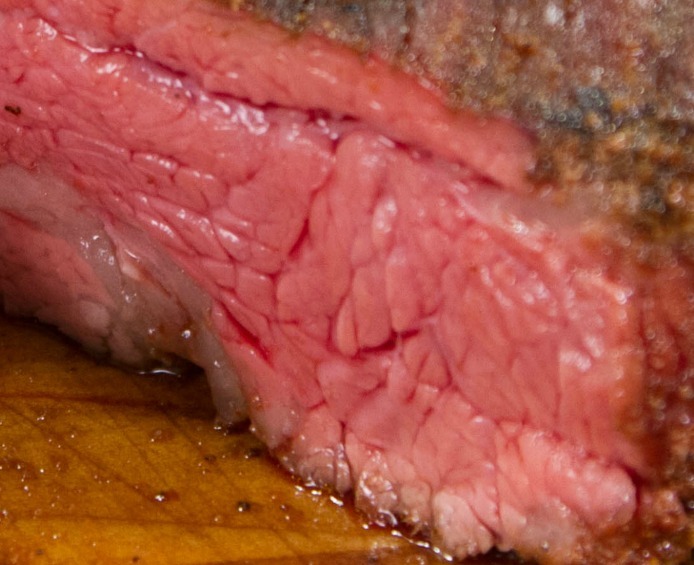
Porterhouse steak and beyond: temps don't change
Many websites that give information on steak doneness break the temperatures down by steak-type. In reality that is an unnecessary distinction, as all steaks experience the doneness stages at the same temperatures. Whether you're cooking up a porterhouse steak or a ribeye, medium doneness is 135–145°F (57–63°C). (The best way to get that temperature just right is, of course, to use a fast and accurate Thermapen ® ONE thermometer.)
To understand the reasons behind doneness, we need to look at what's happening on a physical, thermal level. Steak doneness depends on the ways that the proteins have been affected by the thermal energy they've been exposed to. When meat protein fibers are heated to rare doneness—120–130°F (49–54°C)—they begin to denature: coiling and changing their structure. This changes everything about them. They become less slick and translucent. They start to lose their protein-bound water. And naturally-occurring tenderizing enzymes in the meat become very active.
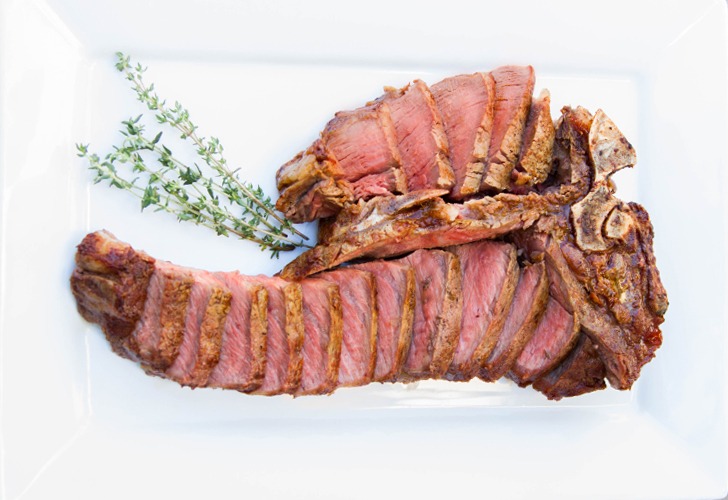
If you heat the steak further to medium rare—130–135°F (54–57°C)—the protein fibers become slightly more fibrous, losing most of their slickness and turning an opaque lighter red. The tenderizing enzymes actually deactivate, and juices will run from the steak if cut. And here's the important thing: this is the same for every cut of steak, regardless of type. The proteins in a filet don't behave any differently than the proteins in a NY strip.
So why do different steaks have different textures? That has more to do with connective tissue and fat content. Obviously a ribeye has more fat than a filet and that will affect its texture. A strip steak has more connective tissue than a filet, making it slightly tougher. A skirt steak has a muscle structure that makes it naturally tough unless cut across the grain, but its medium-rare is still medium rare!
With that bit of understanding under our belts, we can take a look at a complete steak temperature chart.
Steak temperature chart
| Steak Doneness | Temperature (°F) | Temperature (°C) |
| Bleu Steak | 110°F | 43°C |
| Rare Steak | 120–130°F | 49–54°C |
| Medium Rare Steak | 130–135°F | 54–57°C |
| Medium Steak | 135–145°F | 57–63°C |
| Medium Well Steak | 145–155°F | 63–68°C |
| Well Done Steak | 155°F and up | 68°C and up |
Judging steak doneness by color—don't
One thing you may notice in the above chart is the lack of descriptive color information. I understand that those pictures of steaks all piled atop each other at different doneness-levels are very appealing. But they don't take two very important factors into account:
- Judging color is rather subjective and
- Color isn't even a good indicator of doneness anyway
If I tell you that a steak should be rosy and slightly dark in the center, that's not a precise statement. What you consider rosy and dark might be, to me, pink and light. Accurate information about steak doneness cannot be conveyed via color descriptions.

Even if we could agree on exact colors for steak doneness, it still wouldn't matter as they don't always hold true. External factors can change the way the myoglobin—the protein that colors the meat red—behaves. The presence of nitrates, carbon monoxide, and even certain vegetables can affect meat color independent of meat temperature.
In truth, the only objective way to know if your steak is done is to take its temperature. And don't worry, sticking it with a probe does not make it lose more juice!
Temping a steak—doing it right
To temp a steak, you must be sure you're reading the temperature in the coolest part of the steak. The exterior of a steak is likely to have a significantly higher temperature than the center, so it's critical that you measure the thermal center of the steak. In order to get that temp just right, use a fast and accurate instant-read thermometer like the Thermapen ONE. Thermapen is one of the only thermometers fast enough to show changing temperature gradients as you pull the probe through meat in real time. Insert it most of the way through the steak, and draw it slowly out, watching the temperature change as you move the probe through the temperature gradients.
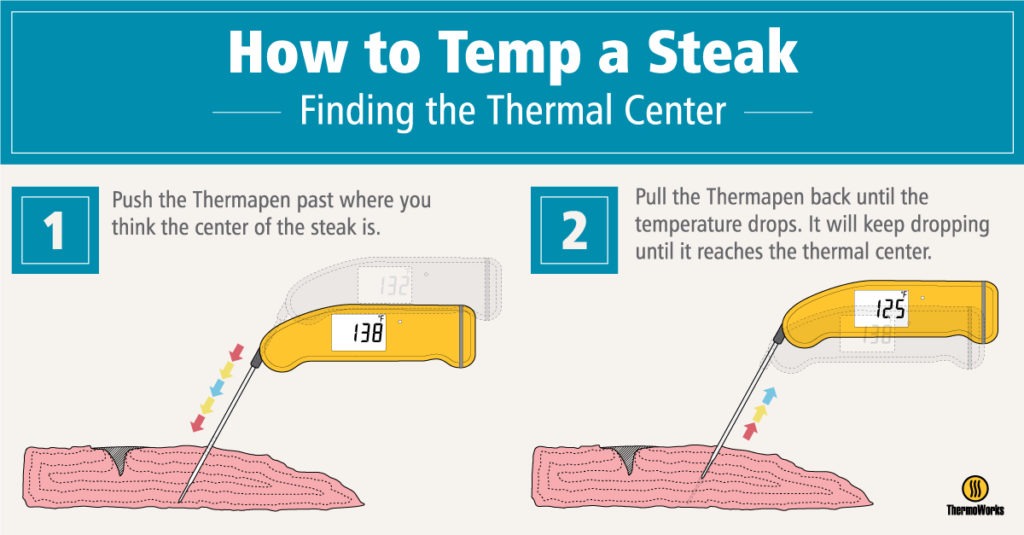
A word about carryover cooking
Heat is not static. Heat moves. In fact, heat tries its best to reach a state of equilibrium. When you take a steak out of a hot pan, the heat at the exterior of the steak will work its way into the steak, raising the temperature of the inside of the steak. This is what we call "carryover cooking". Unless you're cooking your steak sous vide, you will experience carryover cooking, and you need to plan for it. Thinner steaks like skirt steak have less thermal mass and thermal momentum and will experience less carryover than thick steaks. Thick steaks like porterhouse or tomahawk have more thermal mass and more carryover.
If you're looking for a pull-temp chart, I'm afraid I can't help you. We don't publish such a thing, as pull temps are surprisingly variable.The higher the heat, the more carryover there will be because the thermal gradients will be wider. Something cooked in a 225°F (107°C) oven will carryover less than the same thing cooked in a 300°F (149°C) oven. So the pull temperature for any given target temp must be viewed by way of the heat at which the food is being cooked.
Another reason we can't have a pull-temp chart is size. As I said above, larger items experience more carryover than smaller items. This may seem counterintuitive, but if you think of the thermal mass of a whole prime rib vs. the thermal mass of a hamburger, you can see that there is a larger heat reservoir in the roast that can do carryover cooking.
Add to these the fact that heat transfer is proportional to the square of thickness, and you can see that the chart we'd have to make would probably need to be a rather complex 3-dimensional matrix. I can't speak for other sources, but I think our dedication to accuracy here at ThermoWorks prevents us from making a chart that would be anything short of correct, and so we make none at all.
In general, know that low heat carries over less, so your pull temps will be 2–5 degrees below your target. The higher the cooking temp, the greater the pull gap, up to 10° or maybe even 15°F, depending on the size of the cut.
As Harold McGee says "The extent of afterheating depends on the meat's weight, shape, and center temperature, and the cooking temperature, and can range from a negligible few degrees in a thin cut to 20°F in a large roast."
In general, you can plan on 3–5°F (2–3°C) of carryover for a thinner steak and anywhere from 5–7°F (3–4°C) carryover for larger ones. Using a ChefAlarm ® to track the carryover via the min/max function can help you understand how carryover behaves in your kitchen with your steaks.
Grilled reverse-sear steak cooking method
One of the best ways to cook a steak is to use a reverse-sear method. In this method, you start cooking your steak at a low-ish temperature to reach an evenly-cooked desired temperature, then sear the steak for the last few degrees to give it that wonderful charry crust. It works great on the grill with a two-zone setup or inside with a low oven and a hot cast-iron pan.
Not only is the reverse sear a great way to get a steak done right, it's also a great way to get a lot of steaks done quickly. You can cook them all at once in the lower temperature and then sear them off quickly to serve them all at once. We'll break down the steps of you here, so you can see for yourself.
- Preheat your grill for indirect (two-zone) cooking by turning the burners on one side of the grill to high while leaving the others off or stacking your charcoal under one side of the grill.
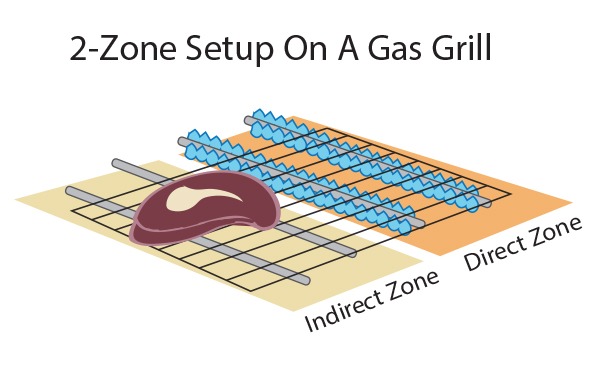
- Salt and pepper your steaks.
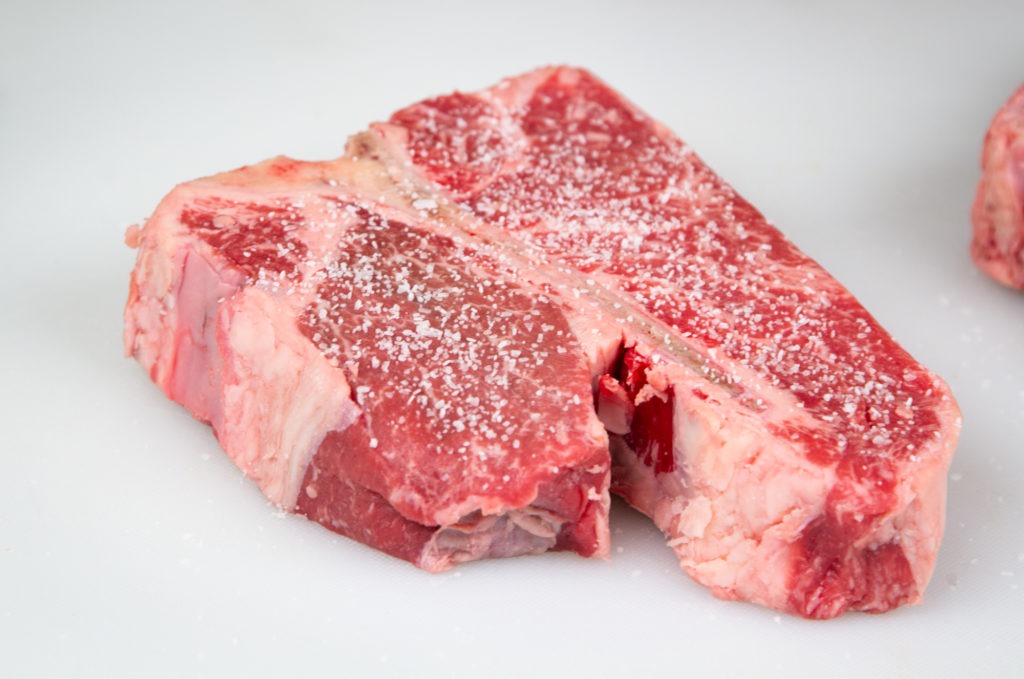
- Place steaks on the cooler, indirect-cooking side.
- Probe at least one steak with the probe from a ChefAlarm and set the high-alarm for about 20°F (11°C) cooler than you want your final temperature to be. I like medium rare steak, so I set it for 110°F (43°C). Make sure your cables don't run across the hot part of the grill.
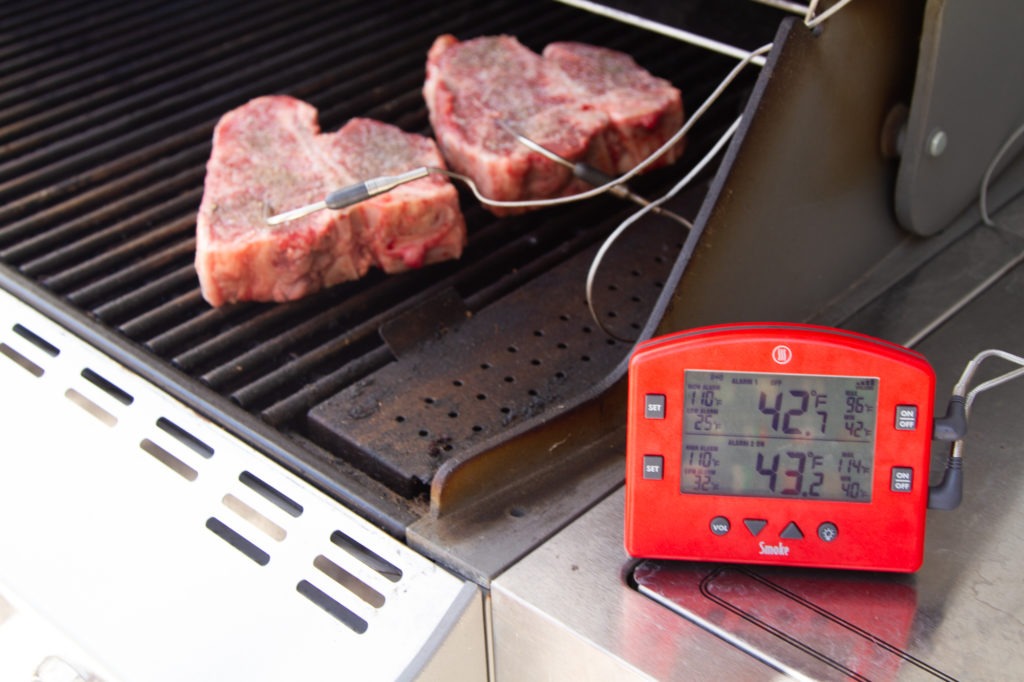
- When the high alarm sounds, move your steaks to the hot side of the grill and sear them over medium-high heat for 2–3 minutes per side.
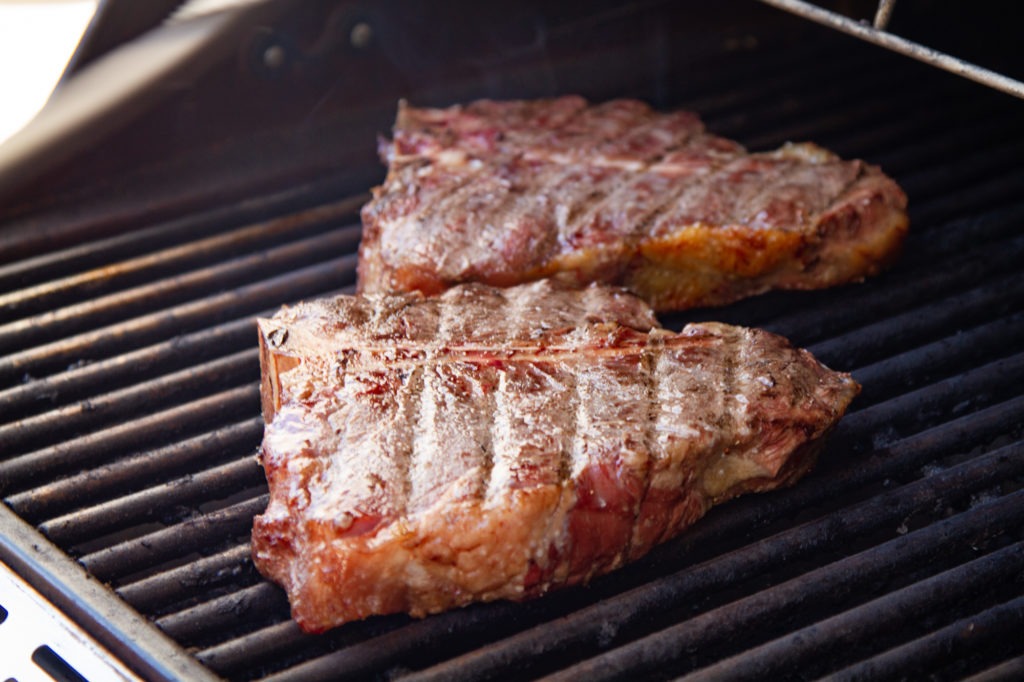
- Use a Thermapen ONE to check the temperature of each steak as soon as you flip them over. Be aware that the last few degrees can go quite quickly.
- As each steak reaches about 5°F (3°C) below your desired finish temp, pull them from heat and allow them to rest.
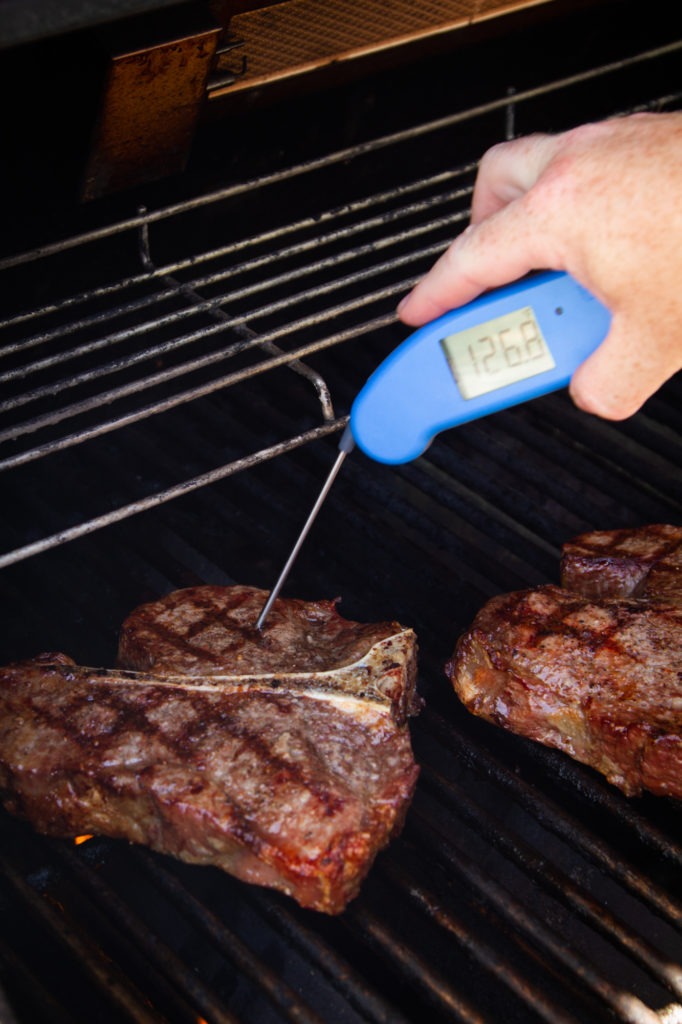
- Look, resting steaks is important and extremely hard to do. I have found that a great way to actually let your steak rest without just cutting right in and eating it is to grill something else while the steaks rest. Cooking some asparagus tossed with a little olive oil, salt, and pepper (maybe some garlic, shallot, or lemon zest…) is a great way to take your mind off the juicy, meaty steaks that are resting on that plate over there, calling your name.

- Eat those steaks!
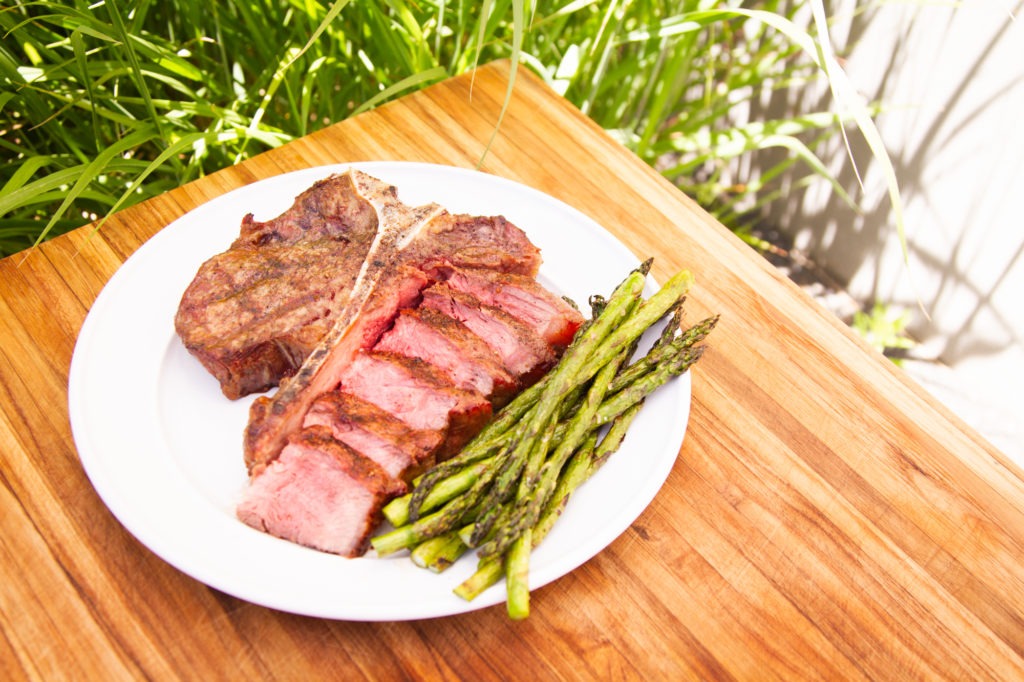
Far from being a subjective matter, cooking steaks to temperature with a Thermapen ONE is the best, most accurate way to get your steak done the way you want it. Ditch the idea of cooking by time or color, and get your medium steak (if that's how you like it) done just right!
Shop now for products used in this post:


Source: https://blog.thermoworks.com/thermometer/steak-temps-getting-it-right/

0 Response to "Or You Can Check Beef Rare Medium Thermometer"
Post a Comment